
It is said that Torajans are people who “live to die”. For this Indonesian ethnic group, funerals are such extravagant events that they sometimes attract tourists. Families can postpone burials years (and the deceased are considered sick and hosted at home until the funeral) until the family can raise enough money and gather as many relatives as possible. And then it’s a jubilant multiday social event with a parade, dances and animal sacrifices. Agung Parameswara photographed these funerary practices when he traveled to South Sulawesi province, where the Torajans live. But often, their funeral isn’t the last time the dead are seen. In August, crypts are opened, coffins are slid back out and bodies delicately unsheathed. This tender ritual is known as Ma’Nene, which is customarily performed every few years. In this practice, which honors the Torajans’ ancestors, corpses are washed and dressed in new outfits. They may be treated to betel nuts and cigarettes, sometimes even taken back to the place where they died. And, finally, they are wrapped in new shrouds and replaced in their freshly repaired coffins. Parameswara was moved when he saw the family of Yohanes Tampang bring him a new pair of sunglasses, which he loved to wear while he was alive. They touched his body and introduced him to new family members. Here: People lift up the coffin of Liling Saalino to a stone grave, or Liang, during a burial ritual, or Rambu Solo ceremony in Lemo village, Toraja, South Sulawesi, Indonesia on August 27, 2016. During the procession, people chat “Tau Tae Sengke”, which means nobody should be angry. (Photo by Agung Parameswara/The Washington Post)

People carry the coffin of Liling Saalino for burial ritual as a part of Rambu Solo ceremony on August 27, 2016. When a person dies, animals such as pigs, chickens and buffalo are sacrificed as the locals believe the animals carry the soul of the deceased into heaven. The number and type of animal killed reflect the social status of the dead person. (Photo by Agung Parameswara/The Washington Post)
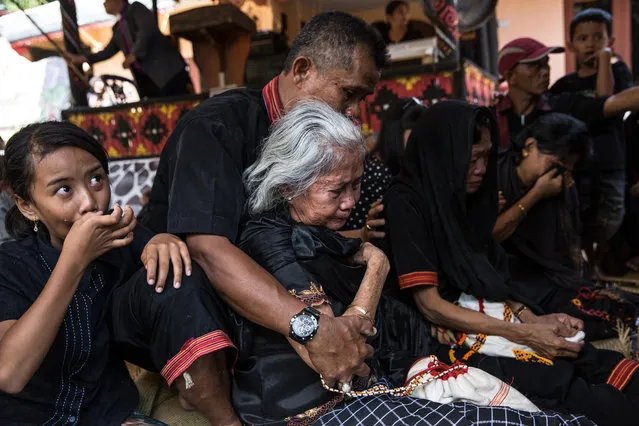
The burial ritual for Liling Saalino. (Photo by Agung Parameswara/The Washington Post)
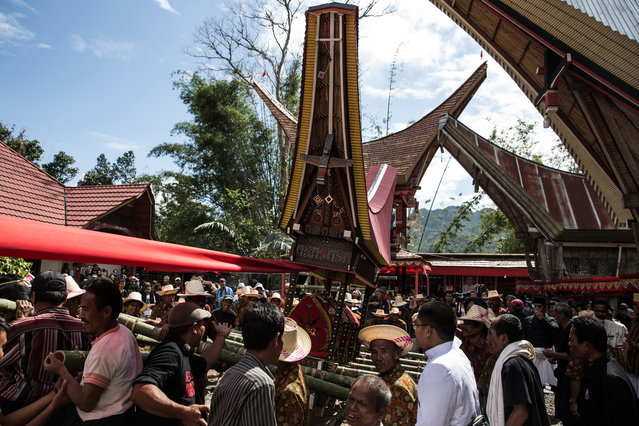
Villagers and relatives gather as they prepare for a parade during the Rambu Solo of V.T Sarangullo in La'Bo village, Toraja, South Sulawesi, Indonesia on August 24, 2016. After the animals are killed, a feast is thrown and the body of the deceased placed into a stone grave, or Liang. (Photo by Agung Parameswara/The Washington Post)
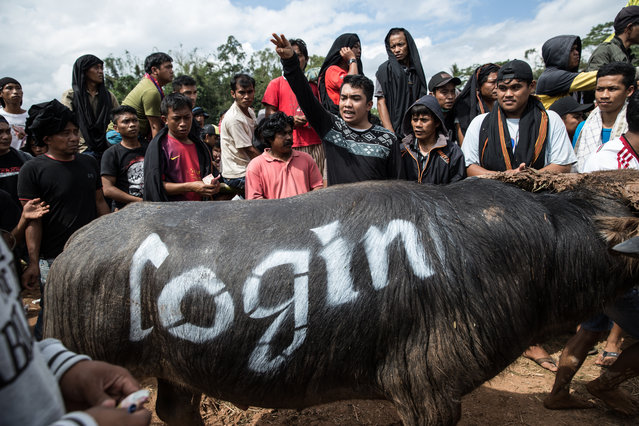
Men gather during a buffalo fight, or Tedong Silaga, as a part of the Rambu Solo for V.T Sarangullo in La'Bo village, Toraja, South Sulawesi, Indonesia on August 24, 2016. (Photo by Agung Parameswara/The Washington Post)
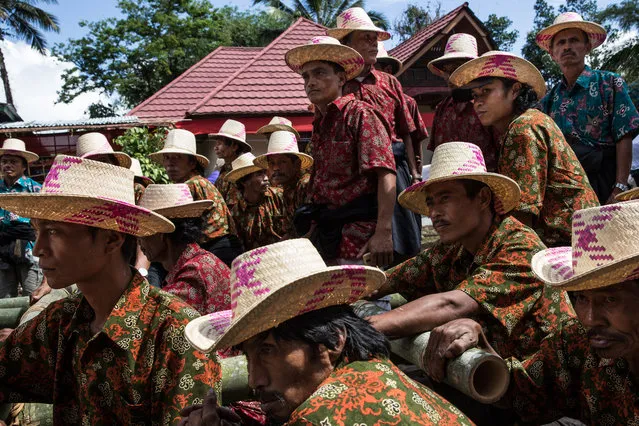
Men gather to perform a Ma'Badong dance during the Rambu Solo of V.T Sarangullo on August 26, 2016. (Photo by Agung Parameswara/The Washington Post)
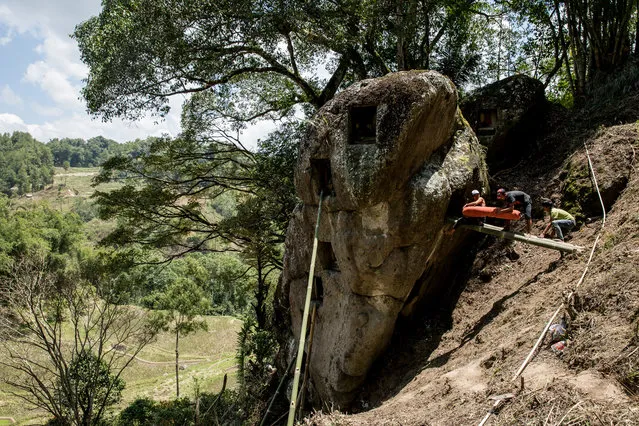
Men take a corpse from inside a Liang as they prepare to perform Ma'Nene in Pongko Village, Toraja, South Sulawesi, Indonesia on August 27, 2016. In Ma'Nene, bodies of the deceased are exhumed to be washed, groomed and dressed in new clothes. Damaged boxes are fixed or replaced. (Photo by Agung Parameswara/The Washington Post)
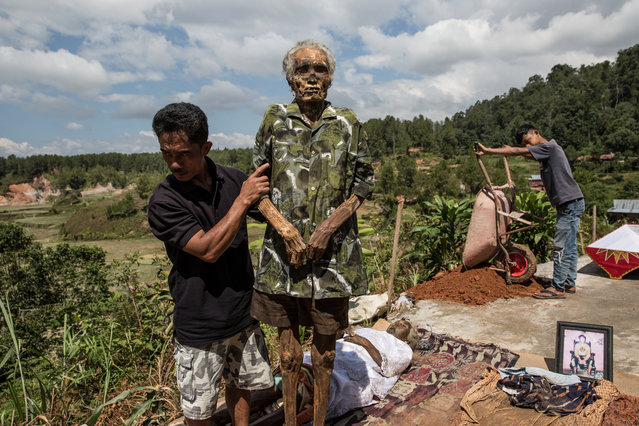
A man holds the corpse of Tang Diasik, who died 6 years ago, as he dries the corpse during the Ma'Nene ritual in Ba'Tan village, Toraja, South Sulawesi, Indonesia on August 23, 2016. (Photo by Agung Parameswara/The Washington Post)
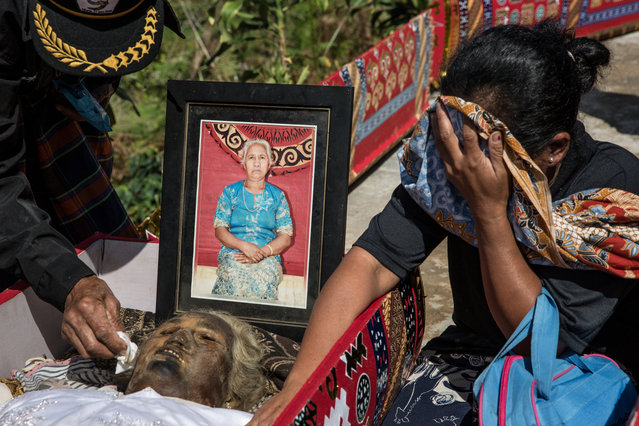
A woman cries in front of the corpse of Marta Ratte Limbong during the Ma'Nene ritual in Ba'Tan Village, Toraja, South Sulawesi, Indonesia on August 23, 2016. Locals believe dead family members are still with them, even if they passed away hundreds of years ago. (Photo by Agung Parameswara/The Washington Post)
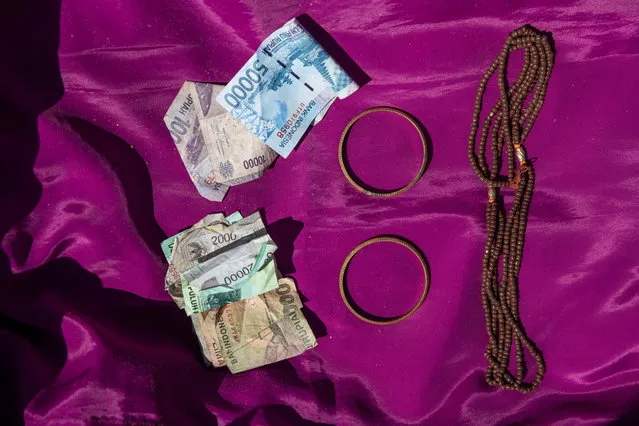
Personal belongings of Marta Ratte Limbong inside the coffin including money, a necklace, and two gold bracelets. (Photo by Agung Parameswara/The Washington Post)

Villagers pray before they perform Ma'nene ritual in Barrupu village, Toraja, South Sulawesi, Indonesia on August 22, 2016. (Photo by Agung Parameswara/The Washington Post)

The Liang with Tau-Tau, or effigies made of wood in Lemo Toraja, South Sulawesi, Indonesia on August 14, 2016. These life-sized representations of the dead were once produced only for the wealthy. They are guardians of the tombs and protectors of the living. (Photo by Agung Parameswara/The Washington Post)
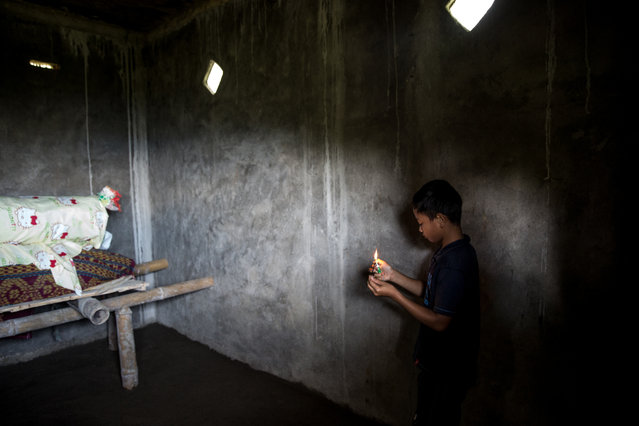
A boy lights incense in front of Lucas Payung's body before the Ma'Nene ritual in Barrupu Village, Toraja, South Sulawesi on August 16, 2016. (Photo by Agung Parameswara/The Washington Post)
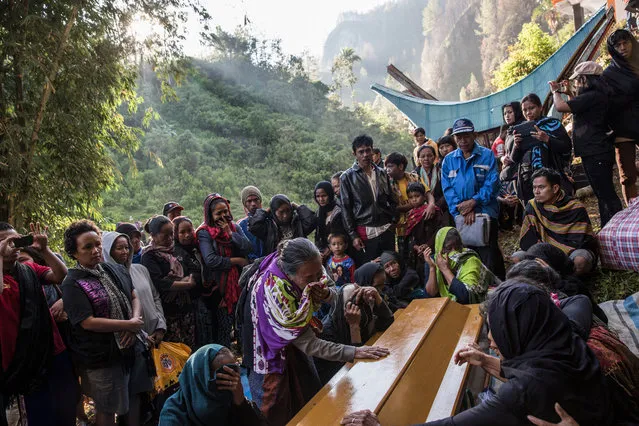
Relatives cry as the coffin containing the bodies of Tikurara, Dumak and Limbongbuak arrived the Liang in Barrupu village, Toraja on August 22, 2016. The corpses were buried in Makassar a few years ago; this year the family decided to move the bodies to the stone grave in their hometown. But first, the family performed the Ma'Nene ritual. (Photo by Agung Parameswara/The Washington Post)
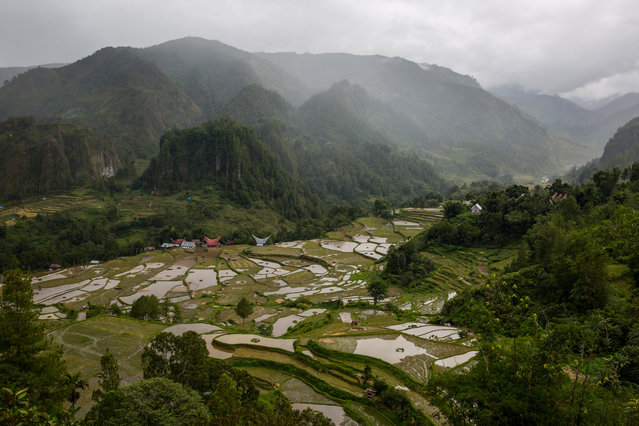
General view of Toraja , South Sulawesi, Indonesia on August 15, 2016. (Photo by Agung Parameswara/The Washington Post)
06 Oct 2016 09:15:00,
post received
0 comments
